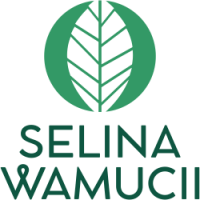Dyckia rondonopolitana - Uses, Benefits & Common Names
Kingdom:
Phylum:
Angiosperms
Order:
Poales
Family:
Genus:
Species:
rondonopolitana
ID:
1304754
Status:
valid
Authors:
Leme
Source:
Flora do Brasil 2020 (JBRJ)
Year:
2012
Citation Micro:
Phytotaxa 67: 29 (2012)
WFO Identifier:
wfo-0001317208
Common Names
- Dyckia rondonopolitana
- Rondonopolitana Dyckia
- Dyckia ferox
Searching for Dyckia rondonopolitana? Discover Suppliers and Request Free Samples Now!
Find Suppliers & Request SamplesDescription
Dyckia rondonopolitana (also called Dyckia rondonopolis, among many other common names) is an evergreen shrub native to South America. It has long, narrow leaves and small yellow flowers. It grows in dry, sunny areas, such as deserts and rocky hillsides.
Uses & Benefits
Dyckia rondonopolitana is a tropical plant that is often used as an ornamental plant. It is known for its air purifying properties, as it is known to remove toxins from the air. It is also known for its medicinal properties, as it has been used to treat a variety of ailments.
Flower, Seeds and Seedlings
Dyckia rondonopolitana has small, white flowers and produces small, round, black seeds. The seedlings are small and have a single, unbranched stem.
Searching for Dyckia rondonopolitana? Discover Suppliers and Request Free Samples Now!
Find Suppliers & Request SamplesCultivation and Propagation
Dyckia rondonopolitana is a tropical plant that is best grown in full sun to partial shade. It prefers moist, well-drained soil and should be watered regularly. Propagation is best done by seed or division.
Where to Find Dyckia rondonopolitana
Dyckia rondonopolitana is native to the tropical forests of Central and South America, particularly in Brazil, Colombia, and Venezuela.
Dyckia rondonopolitana FAQ
What is the scientific name of Dyckia rondonopolitana?
Dyckia rondonopolitana
What is the common name of Dyckia rondonopolitana?
Unknown
What is the natural habitat of Dyckia rondonopolitana?
Tropical and subtropical dry shrublands
Species in the Dyckia genus
Dyckia affinis, Dyckia agudensis, Dyckia alba, Dyckia aurea, Dyckia beateae, Dyckia beloisae, Dyckia brachyphylla, Dyckia brachystachya, Dyckia bracteata, Dyckia brasiliana, Dyckia braunii, Dyckia brevifolia, Dyckia burchellii, Dyckia burle-marxii, Dyckia cabrerae, Dyckia choristaminea, Dyckia cinerea, Dyckia commixta, Dyckia consimilis, Dyckia coximensis, Dyckia crocea, Dyckia dawsonii, Dyckia delicata, Dyckia deltoidea, Dyckia densiflora, Dyckia dissitiflora, Dyckia distachya, Dyckia duckei, Dyckia dusenii, Dyckia elata, Dyckia elisabethae, Dyckia elongata, Dyckia eminens, Dyckia encholirioides, Dyckia estevesii, Dyckia excelsa, Dyckia exserta, Dyckia ferox, Dyckia ferruginea, Dyckia floribunda, Dyckia fosteriana, Dyckia frigida, Dyckia glandulosa, Dyckia goehringii, Dyckia goiana, Dyckia gracilis, Dyckia granmogulensis, Dyckia hatschbachii, Dyckia hebdingii, Dyckia hohenbergioides,
Species in the Bromeliaceae family
Acanthostachys pitcairnioides, Acanthostachys strobilacea, Acanthostachys calcicola, Aechmea abbreviata, Aechmea aculeatosepala, Aechmea alba, Aechmea alegrensis, Aechmea alopecurus, Aechmea ampla, Aechmea andersonii, Aechmea angustifolia, Aechmea anomala, Aechmea apocalyptica, Aechmea aquilega, Aechmea araneosa, Aechmea arenaria, Aechmea aripensis, Aechmea azurea, Aechmea bahiana, Aechmea bambusoides, Aechmea biflora, Aechmea blanchetiana, Aechmea blumenavii, Aechmea bocainensis, Aechmea brachystachys, Aechmea bracteata, Aechmea brassicoides, Aechmea brevicollis, Aechmea bromeliifolia, Aechmea bruggeri, Aechmea caesia, Aechmea callichroma, Aechmea calyculata, Aechmea campanulata, Aechmea candida, Aechmea cariocae, Aechmea carvalhoi, Aechmea castanea, Aechmea castelnavii, Aechmea cathcartii, Aechmea caudata, Aechmea chantinii, Aechmea coelestis, Aechmea colombiana, Aechmea comata, Aechmea conferta, Aechmea confusa, Aechmea conifera, Aechmea costantinii, Aechmea contracta,
References
Elton Martinez Carvalho Leme (b.1960): Based on occurrence of standard abbreviation 'Leme' in the authors string.
POWO record for urn:lsid:ipni.org:names:77123059-1: Govaerts R (ed.). 2023. WCVP: World Checklist of Vascular Plants [Version 11]. Facilitated by the Royal Botanic Gardens, Kew. [WWW document] URL http://sftp.kew.org/pub/data-repositories/WCVP/ [accessed 20 April 2023].

